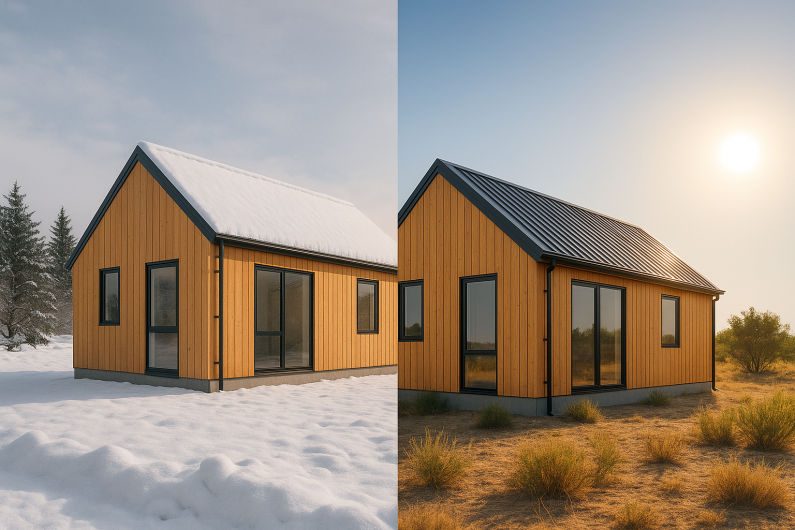Do I Need SIPs in My Climate?

Do I Need SIPs in My Climate?
If you’ve heard that SIPs are only for people building in cold climates, you’re not alone. It’s one of the most common misconceptions we come across. And it couldn’t be further from the truth.
The reality is this: SIPs work better than conventional framing in any climate. Whether you’re in a frosty alpine town or a coastal beach suburb, the performance advantages are the same—what changes is how those advantages show up in your day-to-day life.
Let’s talk cold climates.
This is where most people expect SIPs to shine—and they do. The airtight envelope and continuous insulation of SIPs massively reduce heat loss, which means your home stays warmer for longer with far less energy input. Heating systems can be smaller, bills go down, and the comfort level goes way up. There’s less reliance on electric heaters, heat pumps, or gas, because you’re not leaking warm air out through thermal bridges and gaps in the structure.
So yes—if you’re in a cold climate, SIPs are one of the smartest building choices you can make.
But what if you live somewhere warm?
This is where things get interesting.
Most people assume you only need insulation when it’s cold. But in hot climates, the exact same principle applies—only in reverse. The goal isn’t to keep the heat in, it’s to keep it out. And again, SIPs do this far better than a typical timber-framed wall with insulation jammed in between the studs.
Traditional construction in warmer areas often ignores insulation and airtightness altogether. That leaves homeowners with homes that overheat easily and are expensive to cool. You’re pumping cool air into a structure that’s poorly sealed and riddled with thermal bridges—basically like trying to air-condition a sieve.
SIPs seal the envelope. They keep the heat from entering in the first place, which means your cooling systems can work less. That equals better comfort, lower running costs, and a more resilient building.
It’s not about the temperature outside—it’s about control.
No matter the climate, the goal is the same: you want control over your indoor environment. You want to be warm in winter, cool in summer, and comfortable all year round—without spending a fortune on heating and cooling.
SIPs give you that control. They reduce energy demand, improve airtightness, and eliminate thermal bridging. Whether you’re building in Central Otago, Christchurch, Auckland, or Northland, the building envelope is the one thing that doesn’t change. It needs to perform. And that’s exactly what SIPs are designed to do.
Rethinking regional assumptions
Some of the best-performing SIP homes aren’t tucked away in snow-covered landscapes—they’re in hot, sunny regions like Florida, California, and Western Australia. Places where the goal is to stay cool, not warm. These homes prove that SIPs are not a cold-climate solution; they’re an all-climate upgrade.
In fact, the case for SIPs can be even stronger in warm areas. Air conditioning is one of the biggest energy hogs in modern homes. SIPs create a tight, well-insulated envelope that blocks external heat from getting in, reducing the strain on cooling systems. That means lower energy use, less mechanical intervention, and better comfort—all year round.
SIPs are for anyone who wants a better building.
So, do you need SIPs in your climate? If you want a home that’s easier to heat, easier to cool, cheaper to run, and more comfortable year-round—then yes, you do.
Contact Formance at [email protected] or ring us on 0800 000 527






